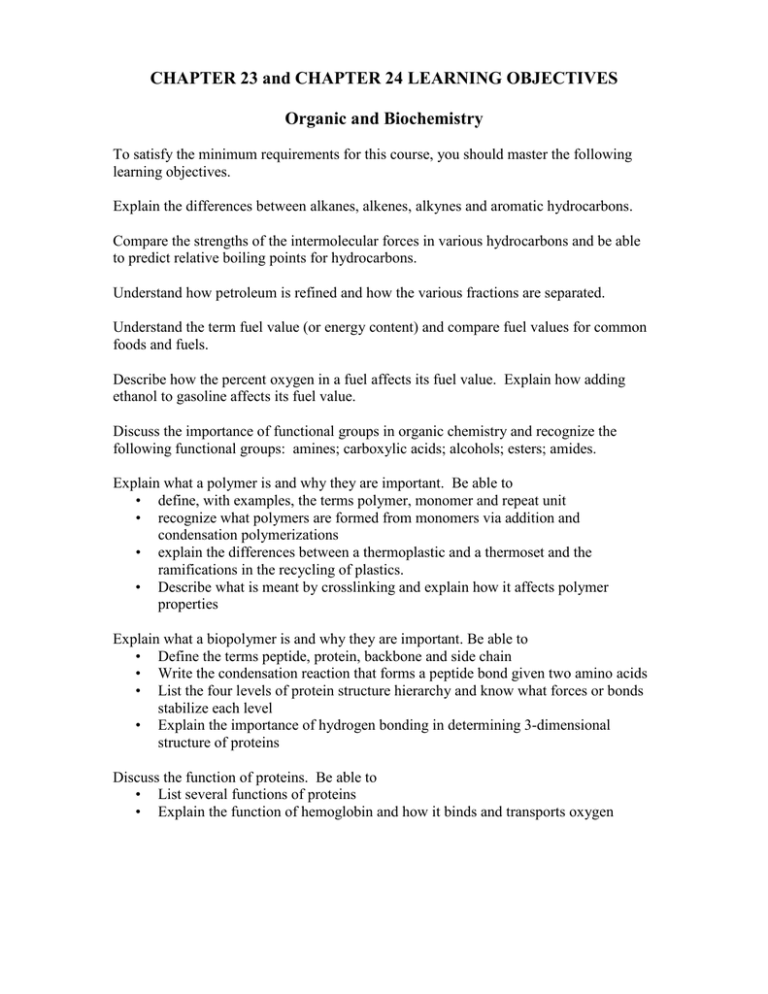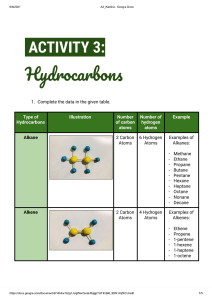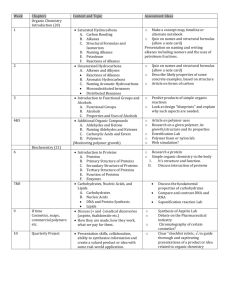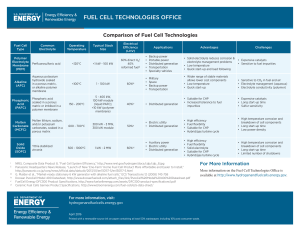CHAPTER 23 and CHAPTER 24 LEARNING OBJECTIVES Organic and Biochemistry
advertisement

CHAPTER 23 and CHAPTER 24 LEARNING OBJECTIVES Organic and Biochemistry To satisfy the minimum requirements for this course, you should master the following learning objectives. Explain the differences between alkanes, alkenes, alkynes and aromatic hydrocarbons. Compare the strengths of the intermolecular forces in various hydrocarbons and be able to predict relative boiling points for hydrocarbons. Understand how petroleum is refined and how the various fractions are separated. Understand the term fuel value (or energy content) and compare fuel values for common foods and fuels. Describe how the percent oxygen in a fuel affects its fuel value. Explain how adding ethanol to gasoline affects its fuel value. Discuss the importance of functional groups in organic chemistry and recognize the following functional groups: amines; carboxylic acids; alcohols; esters; amides. Explain what a polymer is and why they are important. Be able to • define, with examples, the terms polymer, monomer and repeat unit • recognize what polymers are formed from monomers via addition and condensation polymerizations • explain the differences between a thermoplastic and a thermoset and the ramifications in the recycling of plastics. • Describe what is meant by crosslinking and explain how it affects polymer properties Explain what a biopolymer is and why they are important. Be able to • Define the terms peptide, protein, backbone and side chain • Write the condensation reaction that forms a peptide bond given two amino acids • List the four levels of protein structure hierarchy and know what forces or bonds stabilize each level • Explain the importance of hydrogen bonding in determining 3-dimensional structure of proteins Discuss the function of proteins. Be able to • List several functions of proteins • Explain the function of hemoglobin and how it binds and transports oxygen











